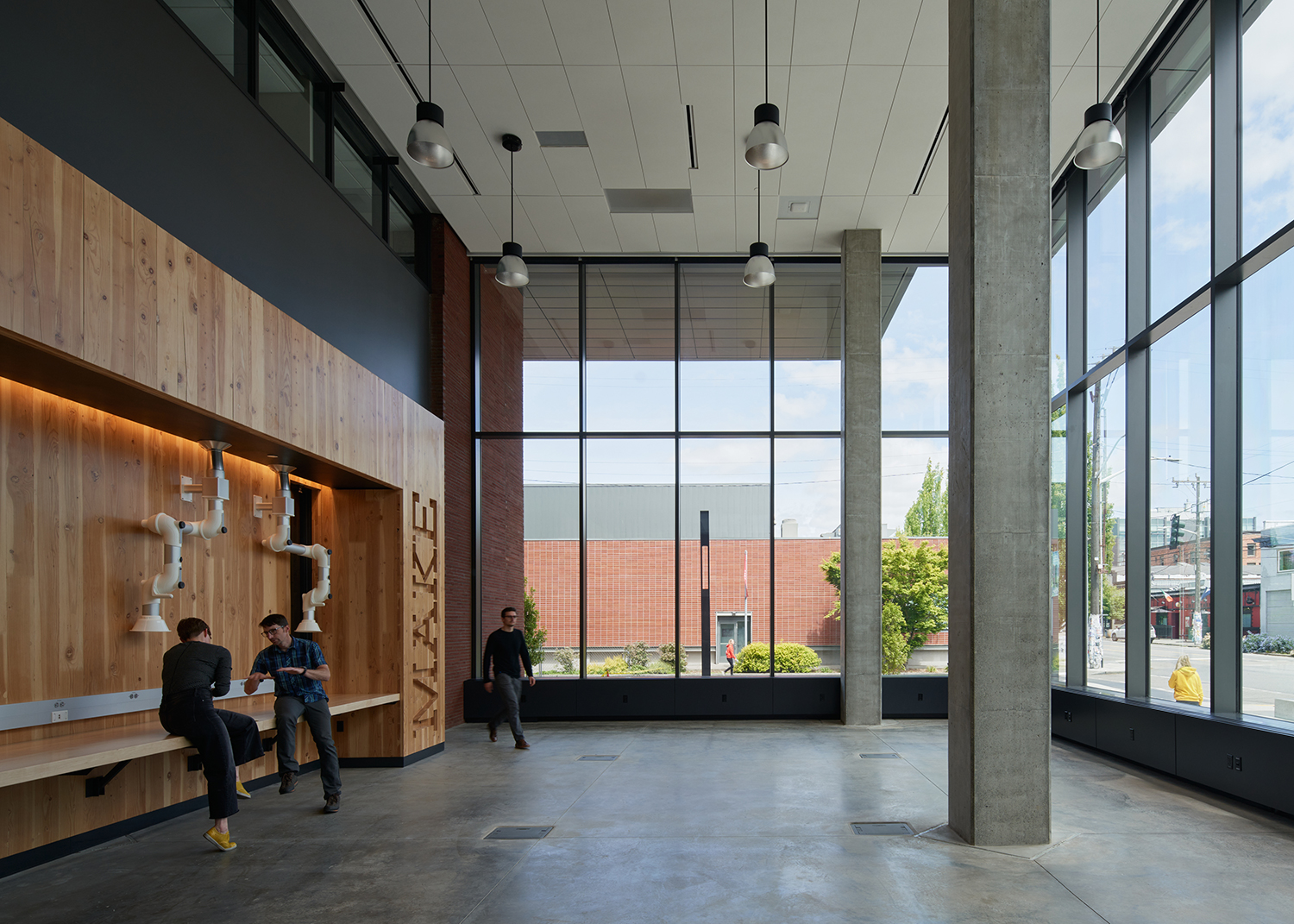
The Billodue Makerspace
Creating a Culture of Innovation

"The Billodue Makerspace will embrace and support curricular and co-curricular intersections, which is an evolutionary movement. In addition, it will elevate equity in making with accessible and inclusive spaces, open access to tools and equipment and integration of best practices."
Sarah Barbara Watstein
Dean, Lemieux Library and McGoldrick Learning Commons
Billodue Makerspace Advisory Group
When Seattle U’s Center for Science and Innovation (CSI) opens in fall 2021, students will be drawn into the first floor Billodue Makerspace, greeted by floor-to-ceiling windows that will bring light to this collaborative work environment. There, individuals from all disciplines who share an interest in hands-on creative problem-solving can turn their ideas into reality. The Billodue Makerspace, made possible by a generous gift from the estate of Edward and Marjorie Billodue, will showcase a reimagining of STEAM education (Science, Technology, Engineering, Arts and Math) where interdisciplinary learning, grounded in Seattle U’s Jesuit ethos, will prepare innovative critical thinkers to lead future generations toward the uncommon good.
Makerspaces change student learning from passive consumption of information to active engagement in hands-on application and ideation. Typically comprising space and furnishings conducive to creative pursuits, high- and low-tech professional-grade tools from 3-D printers to measuring tapes, and with knowledgeable staff on hand, students go to makerspaces to experiment, apply theories, collaborate, problem solve and pursue their passions outside the traditional classroom.
While colleges of science and engineering have traditionally housed project centers and laboratories where teams of students work on real-world assignments in partnership with businesses, government and nonprofit organizations, it’s natural to assume that makerspaces are the domain of STEM (science, technology, engineering and math) students—and on some campuses, they are. However, Seattle U is championing an inclusive trend within the maker movement.
According to Sarah Barbara Watstein, dean of the Lemieux Library and McGoldrick Learning Commons and co-chair of the Billodue Makerspace Advisory Group, "The Billodue Makerspace will embrace and support curricular and co-curricular intersections, which is an evolutionary movement. In addition, it will elevate equity in making with accessible and inclusive spaces, open access to tools and equipment and integration of best practices."
Equity in Making
There are no barriers to entry in the maker environment. Students with all levels of technological experience will be welcomed and encouraged to engage in creating. Knowledgeable staff will provide training in the use of sophisticated professional-grade tools and equipment for those with little or no experience, while lower-tech tools and equipment are often self-explanatory. There will be separate spaces for team brainstorming and consulting with faculty and community partners.
The opportunities for students in the liberal arts and humanities to create and collaborate in the maker environment are virtually unlimited. For example, elementary education, environmental studies and computer science students might collaborate on the development of a prototype teaching tool to engage children in learning about climate change. The availability of 3-D printers offers theater students the ability to design and produce original stage props with insight from engineering students. Costumes can be designed and made on high-quality sewing and crocheting machines.
Beyond providing a place to ideate, collaborate and create, makerspaces enable students to develop the innovative, team-oriented mindset and confidence that employers seek.
Building on Success
The Billodue Makerspace Advisory Group that Watstein co-chairs with Lara Branigan, director of Design & Construction in Facilities Services, was charged with helping to plan and shape the makerspace, incorporating the vision of President Emeritus Stephen Sundborg, S.J., for interdisciplinary collaboration and the university’s mission and values. The group’s membership is representative of faculty and staff from across the colleges and schools, programs and the library.
The space planning draws on the experiences of another campus collaborative space. Seattle U’s Lemieux Library and McGoldrick Learning Commons is a model destination where students come to study, reflect and engage. The library will lend its expertise to help launch, manage and run the new makerspace.
"Our staff are committed to learning and teaching, advancing research and discovery and providing spaces and environments that act as a catalyst for creative expression and intellectual pursuits," says Watstein. "We will carry this commitment through to the Billodue Makerspace."
The Future of Seattle University
The innovative, collaborative and inclusive intent for the Billodue Makerspace aligns with the greater mission-driven vision for the Center for Science and Innovation that will lead our campus into the next decade.
"I cannot think of a step we have taken that will be bigger and more transformative for the university. It will create new opportunities for students across all majors to get hands-on collaborative experience and enable the College of Science and Engineering faculty to keep STEM graduates ahead of the curve and well prepared to enter the workforce." – President Emeritus, Stephen V. Sundborg, S.J.